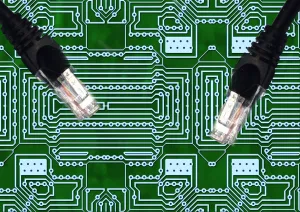Exploring the Different Types of Continuous Emission Monitoring Methods

In an age where environmental concerns are at the forefront of global consciousness, effectively monitoring emissions from industrial processes is paramount. Continuous emission monitoring (CEM) has emerged as a crucial tool in this regard, providing real-time data on the release of pollutants into the atmosphere. By employing various monitoring methods, industries can ensure compliance with environmental regulations, mitigate environmental impacts, and contribute to a cleaner, healthier planet.
Continuous emission monitoring involves the continuous measurement of key pollutants emitted from industrial sources such as power plants, refineries, chemical plants, and manufacturing facilities. These pollutants may include particulate matter (PM), sulfur dioxide (SO2), nitrogen oxides (NOx), carbon monoxide (CO), volatile organic compounds (VOCs), and other hazardous substances. Monitoring these emissions in real-time enables industries to identify sources of pollution, assess the effectiveness of pollution control measures, and take corrective actions as needed.
There are several types of continuous emission monitoring methods employed across different industries. Each method has its advantages, limitations, and applications. Let’s explore some of the most common ones:
- Gas Analyzers:
Gas analyzers are one of the most widely used CEM methods. They measure the concentration of specific gases in emissions using various techniques such as infrared spectroscopy, gas chromatography, and electrochemical sensors. Gas analyzers provide accurate and reliable measurements of pollutants such as NOx, SO2, CO, and VOCs. They are suitable for both stack and ambient air monitoring and can be integrated into automated monitoring systems for continuous operation.
- Particulate Matter Monitors:
Particulate matter monitors measure the concentration and size distribution of airborne particles in emissions. These monitors utilize techniques like light scattering, beta attenuation, and optical microscopy to quantify particulate matter levels. Particulate matter monitors are crucial for assessing the emission of fine particles (PM2.5 and PM10), which can significantly impact human health and the environment.
- Opacity Monitors:
Opacity monitors measure the opacity or visual opacity of stack emissions, which is an indirect indicator of particulate matter concentration. These monitors use light transmission techniques to assess the amount of light obscured by particulate matter in the stack plume. Opacity monitors are often used in conjunction with particulate matter monitors to provide complementary data on emissions.
- Continuous Emission Samplers:
Continuous emission samplers collect gas and particulate samples from stack emissions for subsequent analysis in a laboratory. They use various sampling techniques, such as dilution, isokinetic, and extractive sampling, to obtain representative samples of emissions. Continuous emission samplers are valuable for analyzing pollutant composition, speciation, and chemical properties.
- Continuous Emission Dilution Systems:
Dilution systems dilute stack emissions with clean air to lower pollutant concentrations for analysis by gas analyzers or other monitoring devices. They help overcome challenges associated with high pollutant concentrations, chemical interferences, and instrument limitations. They also ensure accurate and reliable emissions measurements, particularly for pollutants with low concentration limits.
- Continuous Emission Flow Monitors:
Flow monitors measure the flow rate of stack emissions to calculate emission rates and normalize pollutant concentrations. These monitors use techniques such as differential pressure measurement, thermal dispersion, and ultrasonic flow measurement to quantify stack gas flow. Flow monitors are essential for calculating mass emissions and assessing compliance with emission standards.
- Continuous Emission Temperature and Pressure Monitors:
Temperature and pressure monitors measure the temperature and pressure of stack emissions to correct pollutant concentrations for variations in gas properties. These monitors ensure accurate and consistent measurements under different operating conditions and stack configurations. Temperature and pressure correction is crucial for calculating emission rates and comparing data across different monitoring periods.
- Continuous Emission Moisture Analyzers:
Moisture analyzers measure the moisture content of stack emissions to correct pollutant concentrations for water vapor interference. These analyzers use techniques such as chilled mirror dewpoint measurement and capacitance sensing to quantify moisture levels. Moisture analyzers help ensure accurate and reliable emission measurements, particularly for pollutants sensitive to moisture content.
These continuous emission monitoring methods play a vital role in assessing and managing industrial emissions. By combining these methods, industries can achieve comprehensive monitoring coverage and ensure compliance with environmental regulations. Continuous emission monitoring not only facilitates regulatory compliance but also promotes environmental stewardship and sustainable development.
Continuous emission monitoring systems also offer benefits beyond regulatory compliance. They provide valuable data for process optimization, emission reduction initiatives, and environmental reporting. By continuously monitoring emissions, industries can identify opportunities for efficiency improvements, emissions abatement technologies, and pollution prevention measures. This proactive approach not only reduces environmental impacts but also enhances operational efficiency and cost-effectiveness.
Moreover, continuous emission monitoring facilitates transparency and accountability in environmental management. Real-time emission data enables stakeholders, including regulatory agencies, local communities, and environmental organizations, to monitor industrial emissions and hold polluters accountable. Public access to emission data promotes public awareness, engagement, and advocacy for stronger environmental protections.
As technology advances and regulatory requirements evolve, continuous emission monitoring methods will improve accuracy, reliability, and cost-effectiveness. Emerging technologies such as laser-based sensors, advanced data analytics, and remote monitoring capabilities promise to further enhance the capabilities of continuous emission monitoring systems. These advancements will enable industries to meet the challenges of environmental protection and sustainability in an increasingly complex and interconnected world.
In conclusion, continuous emission monitoring is essential for mitigating the environmental impacts of industrial activities and safeguarding public health. By continuously monitoring emissions in real-time, industries can identify sources of pollution, implement pollution control measures, and minimize their environmental footprint. Continuous emission monitoring not only ensures regulatory compliance but also promotes environmental stewardship, transparency, and accountability. Continuous emission monitoring will remain a cornerstone of sustainable industrial practices as we strive for a cleaner, healthier planet.







